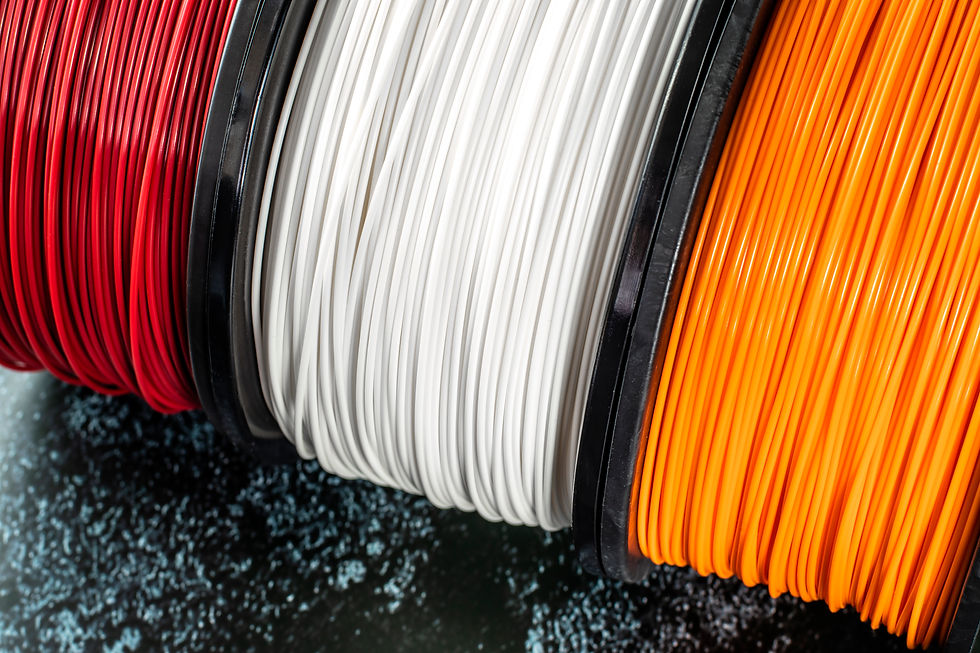🔩 Laser Welding Material Selection and Technique Guide for Medical and Aerospace Applications
- JL Pflash
- 2 days ago
- 2 min read

By Oxwave Technologies
Precision, repeatability, and strength — these are the cornerstones of advanced manufacturing in the medical and aerospace industries. At Oxwave Technologies, our expertise in laser welding ensures that every joint we produce meets the highest standards of performance and reliability. Selecting the right materials and welding techniques is critical to achieving flawless results in these demanding sectors.
Why Laser Welding?
Laser welding offers unmatched precision and control, making it ideal for joining delicate or complex components without introducing excessive heat or distortion. Its benefits include:
Minimal heat-affected zones (HAZ)
Exceptional weld consistency and strength
Ability to weld dissimilar metals
Clean, contamination-free finishes
For industries where safety and accuracy are non-negotiable, laser welding is the clear choice.
Material Selection for Medical Applications
In the medical sector, biocompatibility and corrosion resistance are paramount. The materials chosen must not only perform mechanically but also remain inert and safe within biological environments.
Common Materials:
Stainless Steel (316L, 304L): Excellent corrosion resistance and weldability make these alloys ideal for surgical tools, implants, and tubing.
Titanium and Titanium Alloys: Lightweight, biocompatible, and strong — commonly used for implants and prosthetic devices.
Cobalt-Chromium Alloys: Perfect for wear-resistant components like orthopedic implants and dental prosthetics.
Key Technique:For medical welding, we use pulsed laser welding, which delivers controlled heat input for microscale joints, reducing distortion and ensuring precise weld geometry on small, sensitive components.
Material Selection for Aerospace Applications
Aerospace components demand exceptional strength-to-weight ratios, fatigue resistance, and reliability under extreme conditions. Material selection and joint integrity directly affect aircraft and spacecraft performance.
Common Materials:
Titanium Alloys (Ti-6Al-4V): Favoured for their high strength, low density, and corrosion resistance — essential for engine and airframe parts.
Nickel-Based Superalloys (Inconel 718, Hastelloy): Used in high-temperature, high-stress environments such as turbine components.
Aluminum Alloys (2xxx, 7xxx Series): Lightweight and versatile, though requiring precise parameter control to prevent cracking.
Stainless Steel (17-4PH, 15-5PH): Often used where durability and strength are key, such as in fasteners and housings.
Key Technique:For aerospace assemblies, continuous wave laser welding is preferred for its ability to produce deep, consistent penetration and high-speed welds. Hybrid laser-TIG methods are also employed to enhance control on thicker materials.
Oxwave’s Technical Expertise
At Oxwave Technologies, we tailor our welding parameters — laser power, pulse duration, beam focus, and travel speed — to the specific alloy and geometry of each part. Our advanced systems enable:
Micro-precision welding for miniature medical devices
High-penetration welds for aerospace-grade structures
Cleanroom-compatible processes ensuring contamination-free results
Automated and repeatable production for consistent quality
Why Choose Oxwave Technologies
With competitive pricing, rapid lead times, and a commitment to quality, Oxwave Technologies delivers industry-leading solutions for laser welding and precision manufacturing. Our expertise in stainless steel, titanium, and specialty alloys ensures every weld meets the demanding requirements of medical and aerospace standards.
From surgical instruments to flight-critical components, we weld with light — and precision you can trust.




Comments